As a blogger and agency owner who’s been doing SEO for the last several years, I can’t overstate the importance of competitor research in the SEO landscape. A robust competitive analysis plan can unpack a plethora of content opportunities and help you gain a strong foothold in your niche. To that end, you need to invest in an SEO tool that has excellent competitive research capabilities. In this article, I’ll list down 8 of the best competitor research tools you should consider investing in.
8 Best Competitor Research Tools
1. Semrush
8 Best Competitor Research Tools1. SemrushSemrush: Pricing Plans2. BuzzSumoBuzzsumo Pricing3. SerpstatSerpstat Pricing4. SE RankingSE Ranking Pricing5. AhrefsAhrefs Pricing6. SimilarWebSimilarWeb Pricing7. MangoolsMangools Pricing8. SpyFuSpyFu PricingFinal Thoughts
Semrush is one of the most revered SEO tools on the market. While the tool has a plethora of useful SEO and SEM features, it’s primarily known for its outstanding keyword research and competitor research capabilities. The Semrush Competitive Research toolkit allows you to identify your main organic competitors, their best performing organic keywords, top pages, top paid keywords, traffic stats, and much more. Let me briefly explain how to do competitor research in Semrush. If you’re not a Semrush user, I’d urge you to sign up for a 30-day free trial to implement some of the action items explained below. Get 1-month free trial to Semrush Pro (worth $119.95) To get started, click on “Competitive Research Toolkit” and go through this sequence: SEO > Organic Research > Enter your competitor’s domain You’ll get a top-level view of your competitor’s organic keywords, estimated monthly organic traffic, alongside other important SEO metrics.
The overview report will also highlight a few of your competitor’s top organic keywords:
And the top-ranking pages, along with their percentage share of organic traffic and the total number of organic keywords they currently rank for.
Super useful information because you’ll know exactly what keywords and pages are driving the highest search traffic to your competitor’s site. Hit the “View all” button under each section to see the complete list of keywords that your competitor ranks for and the complete list of top-ranking pages.
Adjust the filters in the report to arrive at the most relevant data. But that’s not all. Semrush also reveals your competitors’ advertising strategies in Google Ads and allows you to monitor their social media efforts. Navigate to “Advertising Research” from the sidebar menu and if your competitor is running ads on Google, you’ll be able to view their paid keywords, URLs ranking in paid search results, and ad copies.
This is just the tip of the iceberg when it comes to Semrush’s competitor research features. To really understand the depth of data you can gather on your top rivals, you’ll need to spend some time using the tool. For that reason, I’d highly recommend that you sign up for a free trial of Semrush Pro to test some of these features out and see how it adds value to your overall marketing efforts. Try Semrush Pro free for 30 days
Unique Features
The feature that sets Semrush apart from the other competitor analysis tools on this list is the Advertising suite. You can unpack a ton of advertising data that’s just not possible with other competitive analysis tools on the market. In addition to being a robust SEO competitor analysis tool, Semrush is also one of the best social media competitor analysis tools on the market. With Semrush’s Social Media Tracker, you can monitor your competitors’ social media presence and gain insights on what content is trending in your industry.
Another noteworthy tool in the Semrush suite is the Traffic Analytics tool — a market intelligence and competitive research tool that provides accurate estimations of any website’s desktop and mobile traffic. It’s an add-on tool that costs $200/mo. It’s slightly on the expensive side, but the unique insights you can gain on your competitors make it a worthwhile investment. To learn more about Semrush’s Traffic Analytics, check out The Ultimate Guide to Semrush Traffic Analytics. Get 1-week trial to Semrush Pro + Traffic Analytics
Semrush: Pricing Plans
Semrush offers 3 plans:
Pro – $119.95/mo Guru – $229.95/mo Business – $449.95/mo
If you’re an SEO beginner, it’s better to get started with Semrush’s Pro plan ($119.95/mo). You’ll get access to all the features and 40+ advanced tools, including Semrush’s competitive research toolkit. Since I run a digital marketing agency and manage multiple websites, I use Semrush’s Guru plan ($229.95/mo). If you manage an agency or SMB, it’s better to go with Semrush’s Guru plan. You’ll have higher limits and get access to advanced features like historical data and branded reports. At $449.95/month, Semrush’s Business plan is best suited for large agencies, e-commerce companies, and enterprises with complex SEO problems. If you’ve never tried Semrush before and want to experiment with some of the features discussed above, I’d encourage you to sign up for a 30-day free trial of Semrush Pro. Click on the link below to activate your trial. Get 1-month free trial to Semrush Pro ($119.95 value)
2. BuzzSumo
BuzzSumo is a content marketing tool that lets you discover content ideas in your niche, identify top influencers, and analyze competitor content. If you’re ever in need of ideas for your next post, you can always bet on BuzzSumo to deliver. It’s packed with innovative features, but for the purpose of this post, let’s just focus on BuzzSumo’s competitive analysis capabilities. With BuzzSumo, you can uncover your competitors’ top-performing posts, track all the key metrics around these posts, and find out which social networks perform the best. Let’s take a deeper look at some of BuzzSumo’s competitor research features. You can sign up for a 1-week free trial of BuzzSumo by clicking here to implement the action items below. To analyze your competitors on BuzzSumo, plug in your competitor’s domain in the search box:
You’ll see your competitor’s top-performing posts in terms of social shares.
By default, BuzzSumo shows the domain’s top-performing posts in the last 12 months. So you may have to play around with the filters to get the most relevant data for your research. For instance, if you’d like to analyze your competitors’ recently produced content, just select the “Past Month” filter to see the engagement metrics for your competitor’s latest posts.
BuzzSumo also allows you to track your competitors’ backlinks. While you can view any site’s backlinks by simply entering their domain in the search box and find sites willing to link to content in your niche, the real value is in determining backlinks a specific URL has generated. Why? Because if you have similar content on your blog, you can target these sites in your email outreach campaign and get high-quality backlinks. To view backlinks of a specific URL, simply copy-paste the URL in the search box. Pay special attention to the engagement metrics of each site to determine the quality of the backlink.
But that’s not all: You can also use BuzzSumo as a YouTube competitor analysis tool. Just plug in your competitor’s channel name in the search bar and get access to engagement metrics for all their videos.
Armed with these insights, you’ll know exactly what kind of videos are resonating with your target audience on YouTube. You can then replicate and improve upon some of these ideas to drive more engagement towards your YouTube channel.
Unique Features
In my opinion, BuzzSumo’s most unique feature is the monitoring feature. With this feature, you can track brand mentions of your competitors and always stay ahead of the curve.
BuzzSumo sends an email alert every time someone links to one of your competitors. The other aspect that needs to be highlighted about BuzzSumo is the advanced filtering options available in Content Analyzer. You can access advanced filtering options by hitting “+More Filters.”
You can get really granular in your competitor research efforts by selecting specific filters to obtain the most relevant data for your needs. For instance, if you’d like to see the infographics published by your competitor in the last few months, just select the “Infographic” option under Content Type. Similarly, if you’d like to analyze your competitor’s long-form posts, select the “In-depth articles only” filter under Word Count.
In other words, BuzzSumo’s advanced filters do all the heavy lifting for you and you’ll be able to zero-in on the information you need in a quick and efficient manner.
Buzzsumo Pricing
As is the trend with other leading SEO and content marketing tools on the market, BuzzSumo’s pricing plans start at $99/month. Here’s the current pricing structure followed by BuzzSumo:
Pro – $99/mo (Unlimited searches, 5 alerts, 5 users) Plus – $179/mo (Unlimited searches, 10 alerts, 10 users) Large – $299/mo (Unlimited searches, 30 alerts, 15 users) Enterprise – $499+/mo (Unlimited searches, 50 alerts, 50 users)
Most bloggers can go with the Pro plan which offers unlimited monthly searches and 5 alerts. If you’re in a super competitive niche or run a digital agency, BuzzSumo’s Plus plan ($179/mo) offers the best value. In addition to greater limits, you also get access to Question Analyzer, one of BuzzSumo’s best features. Large companies and agencies can benefit from the amount of data that can be unpacked with BuzzSumo’s Large plan ($299/mo). It’s also the ideal plan for YouTubers as you get access to BuzzSumo’s YouTube Analyzer. If you need to add more users and would like access to BuzzSumo’s API, you can get in touch with BuzzSumo to get more details on BuzzSumo’s Enterprise plan ($499+/mo). Regardless of the plan you choose, I’d highly recommend you try BuzzSumo free for 7 days to explore the features discussed above. Try BuzzSumo free for 30 days Recommended reading: How to Use BuzzSumo: 18 Advanced Ways to Use BuzzSumo
3. Serpstat
Serpstat is a powerful platform for competitor research and analysis. It provides deep insights into your competitors’ SEO and PPC strategies, allowing you to stay one step ahead. The platform has a pretty large keyword database, which includes 230 Google regional databases, 7.2 billion search queries, 1.8 billion domains, 39.4 million ads, and 4.9 billion search suggestions. In addition, Serpstat has its own backlink index which includes 386 million domains, 1 trillion links, 2.5 million domains crawled daily and 2 billion unique links crawled daily. Serpstat offers more than 50 tools for keyword research, competitor research, rank tracking, site audit, backlink analysis, content analysis, and keyword clustering. Let’s examine the competitor research features of Serpstat. To find out who are your organic competitors are, you can visit: Domain analysis > SEO research > Competitors Enter your domain here and hit the “Search” button to generate a list of domains that rank for similar keywords as your domain.
(Side note: The same report is available in the PPC research section. You can use this report to identify your PPC competitors.) In the report, you can click on any of the competing domains to generate a Domain Overview report. This report will present a summary information on the selected domain: visibility, estimated traffic, number of keywords in SEO and PPC, ads, subdomains, graphs with dynamics, and a short preview of detailed reports.
To get deeper insights, open a “Tree view” report in the left menu to see the structure of your competitor’s website: every page, including the domain and subdomains, and keywords for which they rank in specific positions.
Next, you can analyze your competitor’s backlink profile with Serpstat’s “Backlink analysis” tool. Navigate to Backlink analysis > Backlink dashboard This report will show you key backlink metrics for the domain, including:
Total number of referring domains and backlinks Number of internal links Serpstat Domain Rank (SDR) Top anchors Backlink types New and lost backlinks
Unique Features
The “Link Intersect” tool is a great way to research your competitors. This tool lets you see which websites are linking to your competitors and gives you the ability to find new link building opportunities. The tool allows you to compare the referring domains and backlinks of your site with those of 2 other competitors. Using filters, you can see the backlink donors your site does not have, but your competitors do. Quite simply, it shows you potential backlink opportunities for your site.
Serpstat also offers other tools worth mentioning, for instance, the “Batch analysis” tools. You can check a list of competitors and get information on metrics from Domain analysis and Backlink analysis. This will allow you to see weaknesses and strengths, and analyze the growth of your project in comparison to competitors. In the same way, you can analyze keywords in bulk to check search volume, CPC, keyword difficulty, and competition in PPC.
Speaking of keywords, it’s hard not to mention Serpstat’s “Keyword trends” tool — it shows the most popular queries by country, city, date, and language in real-time. This is a real find for content creators to catch on a trending topic before your competitors set their eyes on the same.
In addition, you can check the text for plagiarism, grammatical errors, spelling mistakes, and more. The tools are still in their Alpha version, which means they are still in the development stage.
Serpstat Pricing
Serpstat offers 4 plans:
Lite – $69/mo Standard – $149/mo Advanced – $299/mo Enterprise – $499/mo
If you are a freelancer or run a small company, the Lite plan ($69/mo) will be a good choice for you. You get access to all 50 tools for SEO, PPC, and SEM, including competitor analysis. Serpstat’s Standard plan ($149/mo) is ideal for in-house marketing teams and small marketing agencies. It includes the Lite plan features, plus the ability to create a team of 3 users and the option to create branded reports. For large agencies and in-house teams of large online stores, it’s better to opt for Serpstat’s Advanced plan ($299/mo). You get features included in Lite and Standard plans, plus more credits and a team of 5 users. The Enterprise plan ($499/mo) is a fit for niche leaders and large companies and eCommerce stores. It includes the features of Advanced plan, plus the White Label option (to create reports under your brand name), the maximum number of credits for all tools, and the option to create a team of 7 users. If you’ve never tried Serpstat before, you can start with a 7-day free trial – this is a great opportunity to test not just the competitor research features outlined here, but all the other tools the platform offers. Click the link below and get 7 days of free access to all the tools within the platform. Try Serpstat for free for 7 days
4. SE Ranking
Talking about competition, one tool that’s had to navigate the tough competitive landscape to create an identity for itself is SE Ranking. Launched in 2013 in an already crowded space of cloud-based SEO tools, SE Ranking has grown steadily over the years and is now used by over 400,000 users across the world. SE Ranking features a set of tools for site audit, keyword research, backlink analysis, and PPC analysis. It also has formidable competitor research features, which is why it’s included in this list. With SE Ranking, you can identify your competitors’ top organic keywords, top paid keywords, best-performing posts, most popular ads, and much more. Let’s take a deeper look at some of these features. To implement the action items below, sign up for a 2-week free trial of SE Ranking by clicking here. Click on the “Competitor Research” tab and enter your competitor’s domain in the search box. The overview report will provide a quick summary of your competitor’s organic traffic and paid traffic.
While you’re still in the overview report, scroll down to view your competitor’s top organic keywords and the distribution of organic keyword rankings. To view more organic keywords alongside critical keyword metrics, hit the “View Detailed Report” button below the column.
Scroll down further in the overview report to find your competitor’s best-performing pages. These are the pages generating the highest amount of search traffic to their site.
Hit “View Detailed Report” to see all the top pages in organic search. Pay special attention to the top 10 pages in the report and organic traffic share of each page.
Click on the number of keywords against each page to see the top organic keywords your competitor is currently ranking for. These are the keywords you’d want to target while replicating the top organic pages and posts of your closest competitor. Just make sure your content is 10x better to increase its chances of ranking higher and attracting natural backlinks. Return to the overview report to analyze your competitor’s PPC strategy. The “Paid keywords” column shows your competitor’s top 5 paid keywords. Hit the “View Detailed Report” button to open up the paid research report.
This report will show your competitor’s estimated paid traffic, the total number of paid keywords, and a complete list of paid keywords your competitor is targeting in Google ads.
You can also use SE Ranking to view your competitors’ backlinks in order to replicate their link building strategies. Visit the “Backlink Checker” tab and enter your competitor’s domain in the search box. The Backlink overview report will show you data on your competitors’ referring domains, backlinks, dofollow/nofollow ratio, alongside other key backlink metrics.
To view the complete list of sites linking to your competitor’s domain, click on the Referring Domains number.
You can adjust the filters in this report to identify the most authoritative backlinks your competitor has obtained over the years. These are the backlinks you’d want to replicate for your site to beat your competition in SERPs.
Unique Features
SE Ranking has a few features that deserve a special mention. The first feature I’d like to highlight is SE Ranking’s Report Builder, which allows you to create personalized reports and present critical SEO data points to your clients in a clear and concise manner.
If you run an agency, you’ll be mighty pleased with this feature. The other feature that’s worth talking about is the “Competitor Comparison” feature, where you can compare the organic traffic and keywords of your domain with two of your main organic competitors. Running this check will allow you to see what keywords your domain has in common with your competitors and what keywords are unique to your domain. More importantly, you’ll discover missing keywords — these are the top keywords your competitors are ranking for that your site is not. If you ever run out of keyword ideas for your next piece of content, these are the keywords you need to consider.
SE Ranking Pricing
SE Ranking is one of the most affordable SEO services on the market, with plans starting at $39 a month. You can further save 20% on any SE Ranking plan by opting for annual billing. Here’s the pricing structure that SE Ranking currently follows:
Optimum – $39/mo (250 keyword rankings, 10 websites) Plus – $89/mo (1000 keyword rankings, unlimited websites) Enterprise – 189/mo (2500 keyword rankings, unlimited websites)
The Optimum plan ($39/mo) is ideal for solopreneurs, SMBs, and bloggers. You’ll get access to all features and you can add up to 10 projects/websites and monitor 250 keyword rankings. If you run a digital marketing agency, then the Plus plan ($89/mo) is better suited for your needs as there’s no restriction on the number of projects you can add to your account. You also get to monitor 1000 keyword rankings and run site audits for 150,000 pages. The Enterprise plan, as the name suggests, is meant for large enterprises and big agencies as you’ll have greater limits and even get access to SE Ranking API. Try SE Ranking free for 2 weeks
5. Ahrefs
Ahrefs is one of the leading SEO tools on the market. When it was launched in 2012, it was primarily used for backlink analysis. Since then, the tool has evolved into a full-fledged SEO software by integrating advanced keyword research and content marketing features. Despite adding several useful features to their toolkit, backlink analysis continues to be Ahrefs’ biggest strength. And it’s this strength that you can leverage to uncover a ton of competitive intelligence data to boost your search rankings. First off, you can use Ahrefs’ Site Explorer to find out how your competitors are acquiring backlinks and replicate their link building strategies. To do this, enter your competitor’s domain into Ahrefs’ Site Explorer:
A quick glance at key metrics like referring domains and backlinks in the overview report should give you an indication of how robust your competitor’s link building strategies are.
To get deeper insights into your competitor’s backlink profile, navigate to the “Referring domains” report. Here you’ll be able to view all the websites that link to your competitor’s domain.
Click on the “Links to target” number against each website to view all the pages from that website that link to your competitor. If you have similar pages on your website targeting the same keywords, you’d want to take note of these links for your future link building efforts. You can also take a look at your competitor’s newly-acquired backlinks by navigating to Backlinks > New in the overview report. This will show all the backlinks acquired by your competitor in the last 3 months.
And finally, you can gain super actionable insights by finding your competitor’s best pages by backlinks. To access this data, navigate to Pages > Best by links in the overview report. Here you’ll find your competitor’s top pages based on the number of incoming links.
This report contains a treasure trove of useful data as it shows you what kind of content attracts the highest number of backlinks in your industry. You can then aim towards creating similar (and better) content on your site and steal some of your competitor’s best backlinks.
Unique Features
Aside from identifying your competitors’ most linked-to pages, Ahrefs also helps you find your competitors’ most-shared content in the Top Content report.
This report is really useful for finding topics that resonate with your social media audience. In addition to this, you also have Ahrefs SEO Toolbar, an SEO Chrome extension that provides you with instant analytics on any site or search result.
In my opinion, Ahrefs’ SEO extension is one of the best SEO Chrome extensions on the web. Its usefulness is only amplified when you combine it with a paid Ahrefs account. You can use it to get an in-depth on-page report on any page you visit, alongside important SEO metrics and data points like domain rating, URL rating, total number of referring domain and backlinks, organic traffic, keywords, and much more.
Ahrefs Pricing
Ahrefs offers 4 monthly pricing plans:
Lite – $99/mo (5 projects, 500 tracked keywords) Standard – $179/mo (10 projects, 1500 tracked keywords) Advanced – $399/mo (25 projects, 5000 tracked keywords) Agency – $999/mo (100 projects, 10000 tracked keywords)
My biggest pet peeve with Ahrefs is that they don’t offer a free trial on any of their plans. You need to pay $7 for a 1-week trial of Ahrefs’ Lite or Standard plan. This structure is mainly followed to prevent trial abuse, but at a time when most of Ahrefs’ competitors are offering a free trial on their software, it wouldn’t hurt Ahrefs to do the same to help potential users try all the features before making their decision. Like Ahrefs and BuzzSumo, Ahrefs’ basic plan costs close to $100 and is ideal for bloggers, SMBs, and SEO beginners. The main difference between the four plans is the limits. Ahrefs claims their Standard plan ($179/mo) is the most popular amongst users and because of the greater limits, it’s better suited for growth-stage startups and seasoned bloggers. If you run an agency, you can go with the Advanced plan ($399/mo), or if you have a bigger budget, the Agency plan ($999/mo). With both these plans, you can add multiple users to your Ahrefs account. If you opt for annual billing, you get 2 months free on any Ahrefs plan. Click here to start your Ahrefs trial for $7
6. SimilarWeb
SimilarWeb is one of the most widely used competitor analysis tools on the market. It shows you an accurate picture of your competitors’ traffic, traffic sources, top organic keywords, top paid keywords, and other important data points. The best part? You can access all this data for free and you can even export it to a PDF file for later reference. To get started, enter your competitor’s domain in the search box. SimilarWeb will generate an in-depth analytics report on your competitor’s site.
You can navigate to different sections of the report through the sidebar on the left. You’ll get an overview of your competitor’s traffic:
And the different traffic sources:
You’ll also see your competitor’s top 5 organic keywords and paid keywords.
Alternately, if you’re unsure about the sites you’re competing against in search results, you can simply enter your own domain in the search box. Once the report is generated, navigate to the “Competitors and Similar Sites” section of the report by clicking on the “Competitors” link in the sidebar. SimilarWeb will display 10 of your top competitors on the basis of similarity and rank.
From here, you can click on any of your competitor websites to generate a detailed analytics report.
Unique Features
SimilarWeb doesn’t just provide you with data on websites, but also offers you insights on apps. You can track your app’s average monthly downloads, ratings, and even monitor its category rankings.
Even better, you can benchmark your app’s performance with that of your competitors. To view the apps your app is competing against in the App Store, navigate to the “Similar Apps” section of the report.
SimilarWeb Pricing
SimilarWeb has just two plans — Free and Enterprise. I’ve already mentioned the efficacy of the free plan above and how it helps you gain useful insights on your competitors. But like all free plans, there are major limitations and restrictions on your usage. But unlike other tools featured in this list, there’s a cloud of uncertainty surrounding the pricing structure of SimilarWeb. In order to upgrade to the Enterprise plan, you need to get in touch with a SimilarWeb product expert. Personally, I’ve just used the free version of SimilarWeb, but the competitive intelligence gathered from the free version warrants its inclusion in this list. That said, you can definitely gain more actionable insights with the Enterprise plan. For instance, a large portion of data in App Analysis is available only for Enterprise users. This means you can only obtain surface-level data on your app’s performance like monthly downloads, ratings, and category rankings. Crucial metrics like engagement, retention, and usage patterns are accessible only when you upgrade to the Enterprise plan. Try SimilarWeb for free
7. Mangools
Mangools is a powerful SEO suite that includes tools for keyword research, backlink analysis, rank tracking, and SERP analysis. It can also be used to collect a goldmine of data on your competitors. You can use Mangools’ SiteProfiler to check essential SEO metrics and insights on your competitors. To get started, select “SiteProfiler” from the Mangools dashboard and plug in your competitor’s domain in the search box.
The overview section of the report will show you important SEO metrics like the site’s domain authority, page authority, Alexa rank, etc.
Using the left navigation panel, you can move to different sections of the report and get valuable insights on your competitor’s backlink profile and top content. Pay special attention to the Dofollow links ratio, link type distribution, and the top referring domains in the Backlinks section of the report.
You’ll also be able to view your competitor’s top content in terms of social shares and referring domains. Researching on your competitors’ top content can lead to a ton of proven content ideas for your blog.
Unique Features
One of SiteProfiler’s unique features is the way in which you can benchmark your website against your top rivals. To identify your main organic competitors, just enter your domain in the search box and navigate to the “Competitors” section of the report. Here you’ll find 12 of your top organic competitors.
You’ll see the keywords you have in common, their Alexa Rank, and referring IPs. For a deeper analysis of each of your competitors, you can click the “Analyze” button and Mangools will open a SiteProfiler report for the selected domain. Another thing I like about Mangools is the super-slick interface and the way in which the data is presented. Mangools is basically 5 tools packaged into one, so a user can get easily overwhelmed when there are so many features to explore. But the user-friendly nature of the tool, combined with the smooth UI, makes it easier to master the features and derive maximum value for your business.
Mangools Pricing
Mangools’ basic pricing starts at $49/month when billed monthly. You can save 40% by opting for annual billing. Here’s the current monthly pricing structure of Mangools:
Mangools Basic – $49/mo Mangools Premium – $69/mo Mangools Agency – $129/mo
You get access to all 5 tools within Mangools with each of these plans. The only difference between these plans is the limits. For instance, with Mangools Basic, you can track only 25 competitor keywords, while Mangools Premium and Agency allow you to track unlimited competitor keywords. If you’re just starting out, it’s better to sign up for the free trial first and then upgrade to the Basic plan. Try Mangools free for 10 days
8. SpyFu
Although it looks a bit dated, SpyFu is still one of the best competitive analysis tools on the market. With SpyFu, you can identify your organic and paid competitors, assess their SEO performance, identify their top-ranking pages, monitor their backlinks, do competitor-based keyword research, and much more. In fact, if you’re just starting out, SpyFu is the best competitor analysis tool you can go for because it’s one of the few SEO tools that has a solid free plan. Let’s take a brief look at some of these features. To get started, enter your competitor’s domain in SpyFu to get a quick summary of their top organic keywords, estimated SEO and PPC clicks, top pages, backlinks, and other useful data.
On the left side of the overview report, you’ll find links to different sections within the report. Pay special attention to the “Top Pages” section as these are your competitor’s top-ranking pages in organic search.
You can reverse-engineer these pages to find keyword ideas with traffic potential. Similarly, you can click on any of your paid competitors’ sites to get a PPC overview report of that domain’s paid keywords, estimated monthly PPC clicks, monthly PPC budget, and other PPC metrics. Click on “See all recommendations” at the bottom of the report or simply visit the “AdWords Advisor” tab to get a complete list of keyword recommendations. Use these recommendations to get the most out of your PPC campaigns. Visit the “AdWords History” section of the report to browse your competitor’s complete Google Ads campaign history, including their most trusted keywords, estimated clicks/month for those keywords, and their cost/click.
Beside each ad copy, you’ll find keywords that trigger the specific ad. Super helpful data if you’re planning on replicating your competitors’ ad strategies.
Unique Features
In my opinion, SpyFu is a better PPC analysis tool than an SEO tool. In other words, you’re more likely to gather actionable insights on your competitors’ PPC strategies than their SEO practices. One of SpyFu’s best features is “Top AdWords Buy Recommendations” — these are the keyword recommendations based on an analysis of your competitor’s domain. To access this section, navigate to the “AdWords Advisor” section in the overview report. Here you’ll find the top 5 keywords used by your competitor in Google Ads and you can bid for the same keywords for your campaign to replicate their success.
The other useful feature is “AdWords Templates” — these are pre-written PPC ads handcrafted by advertising experts at SpyFu to get your PPC campaigns up and running. This is a paid feature, so in order to access it, you’ll need to upgrade to SpyFu’s basic plan ($39/mo).
SpyFu Pricing
As mentioned before, SpyFu is one of the few SEO tools that offers a free plan that’s worth using. But like any free plan, there are restrictions and limits to your usage. To access more data points and premium features like AdWords templates, you’ll need to upgrade to a paid plan. Here are SpyFu’s 3 pricing plans:
Free for Life – $0/mo (unlimited searches, 10 search results) Basic – $39/mo (unlimited search results, 5k weekly tracked keyword rankings) Professional – $78/mo (15k weekly tracked keyword rankings, custom branded reports)
You can save $69 on the basic plan and $249 on the professional plan by choosing annual billing. Sign up for SpyFu’s free plan
Final Thoughts
So that wraps up my list of top competitor analysis tools. I personally prefer Semrush and it’s my go-to competitor research tool to analyze my organic and paid competitors. Second would be BuzzSumo, followed closely by Ahrefs. All these tools cost close $100 a month, so if you have a smaller budget, you can go with SE Ranking, Mangools, or SpyFu. And finally, if you’d like to use a free competitor research tool, you can trust SimilarWeb to deliver the competitive intelligence data you need. Did I miss out on any of your favorite competitive analysis tools? Let me know in the comments section below. If you liked this article, please share it on Twitter using the link below: Editor’s Note: This article was first published on 30 September 2020 and has been updated regularly since then for relevance and comprehensiveness.
SEO Tools Showdown: Semrush vs Ahrefs vs Moz vs SpyFu 5 Best SEO Tools for Digital Marketing Agencies 26 Best Google Chrome Extensions for SEO Semrush vs SpyFu: Which Competitor Analysis Tool is Better? 10 Best SEO Podcasts to Master the Art of SEO

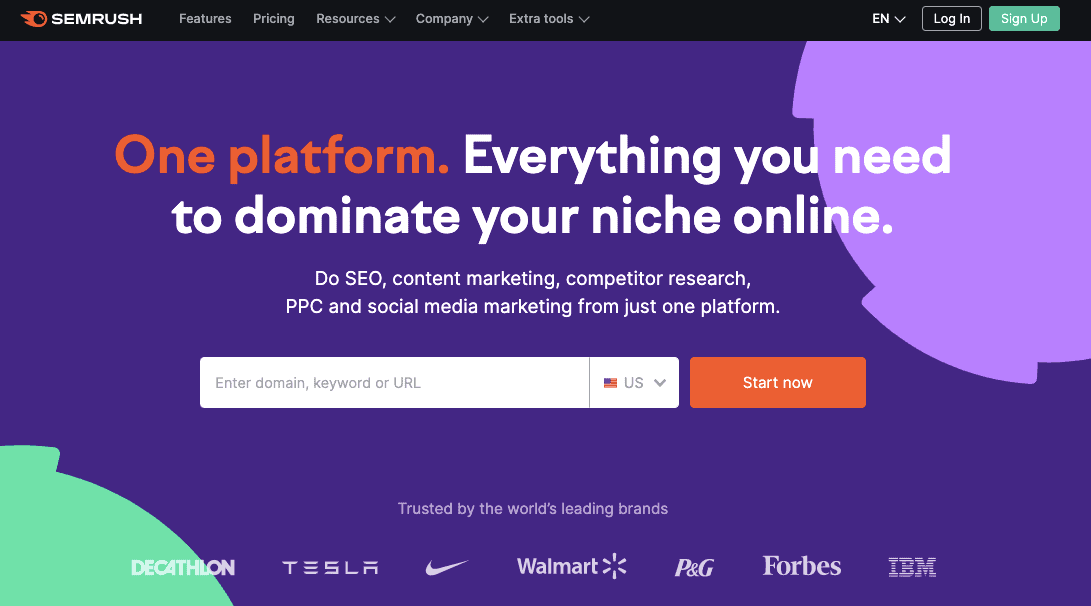
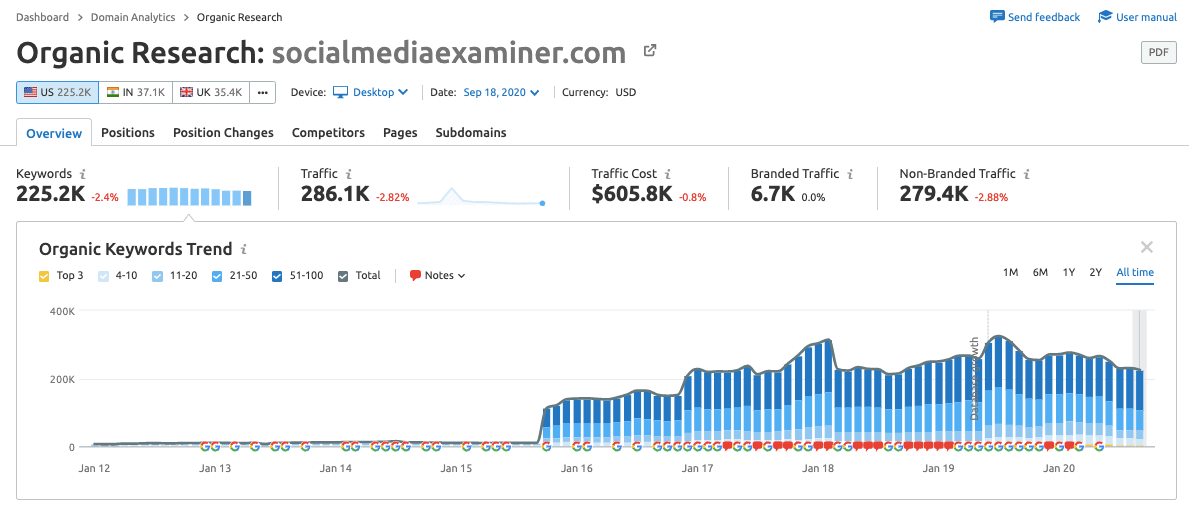
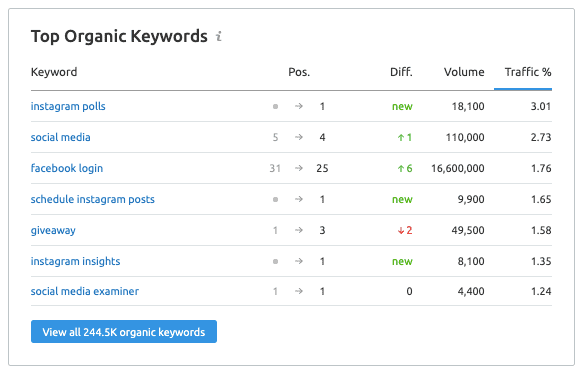
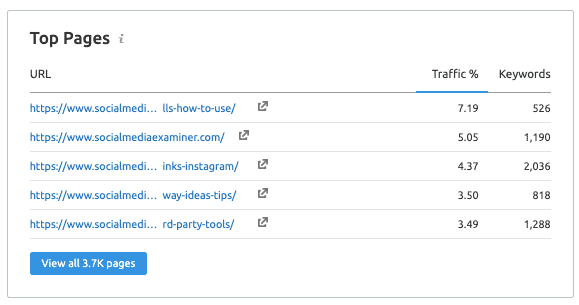


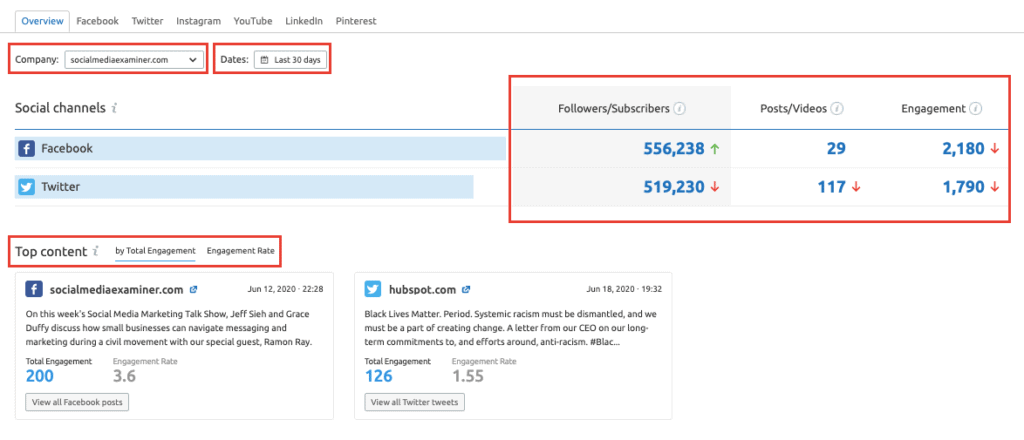
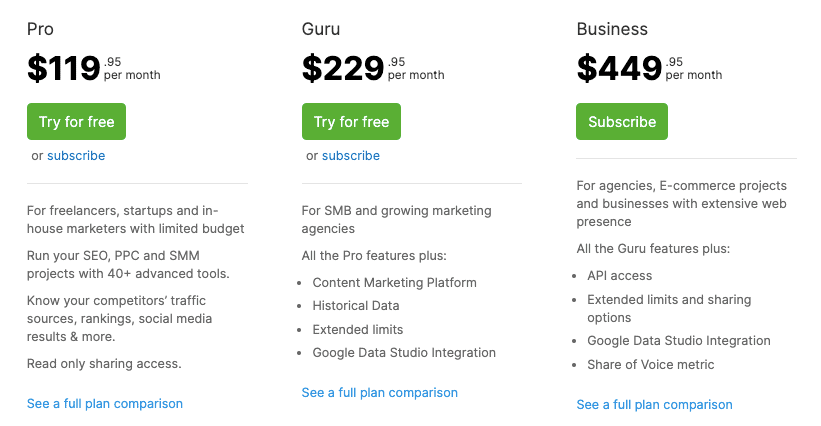
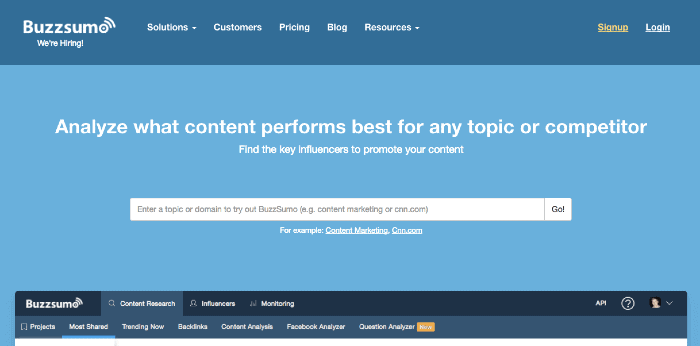
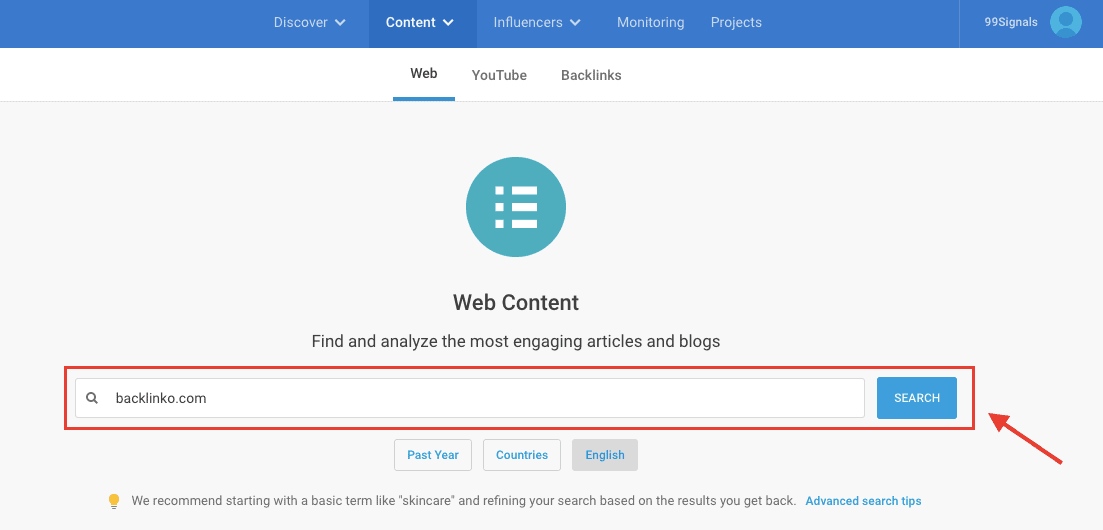




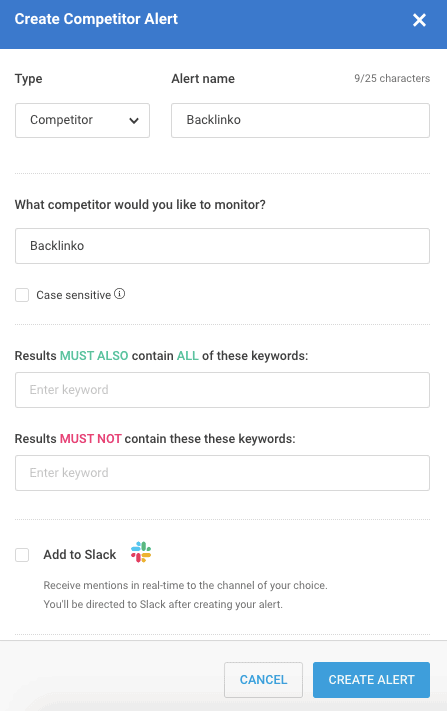

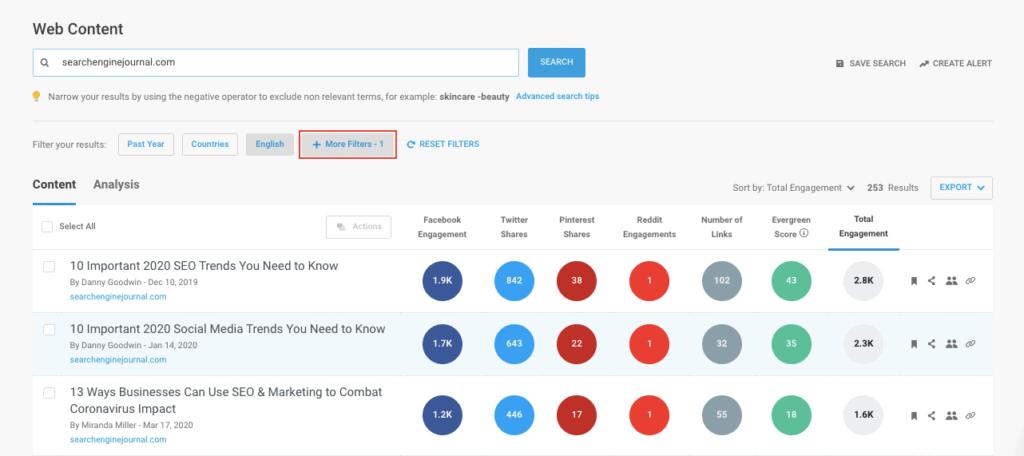
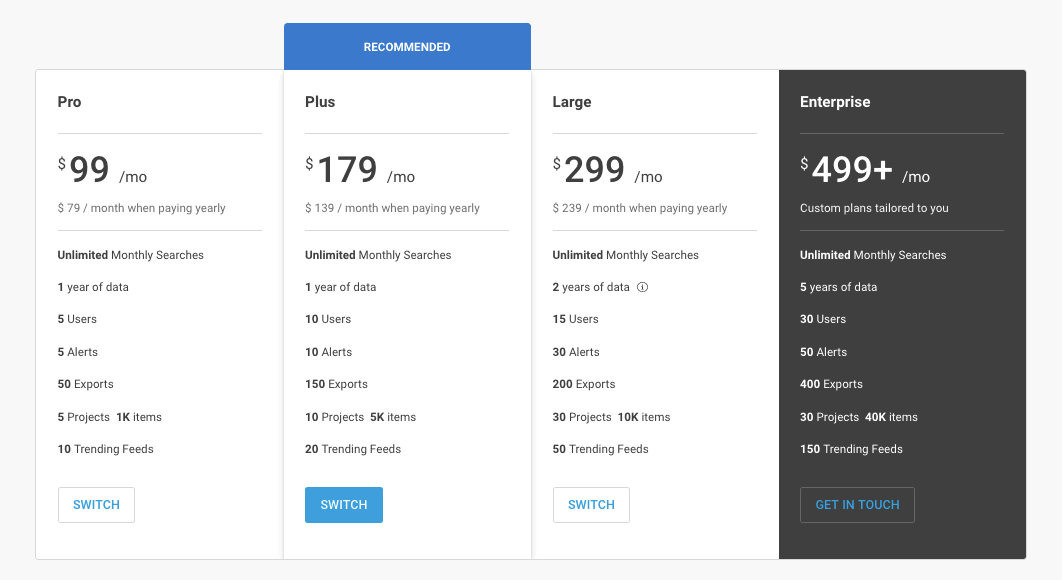

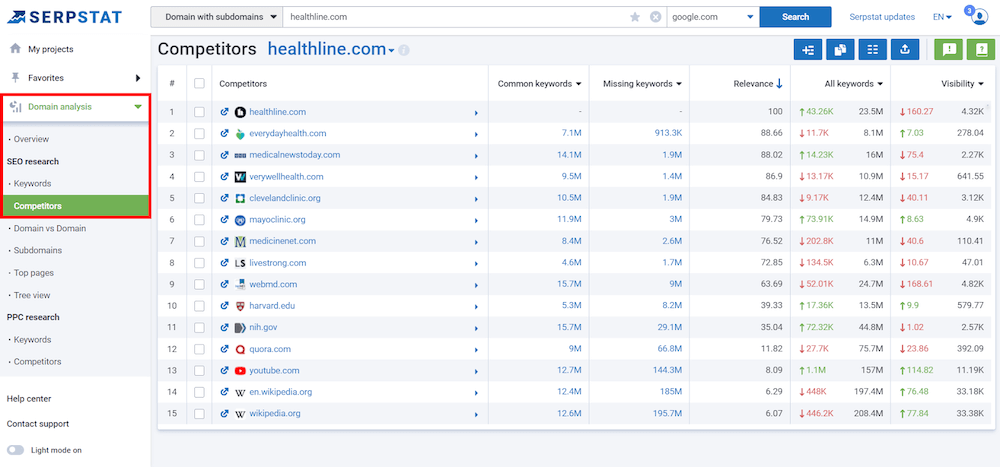


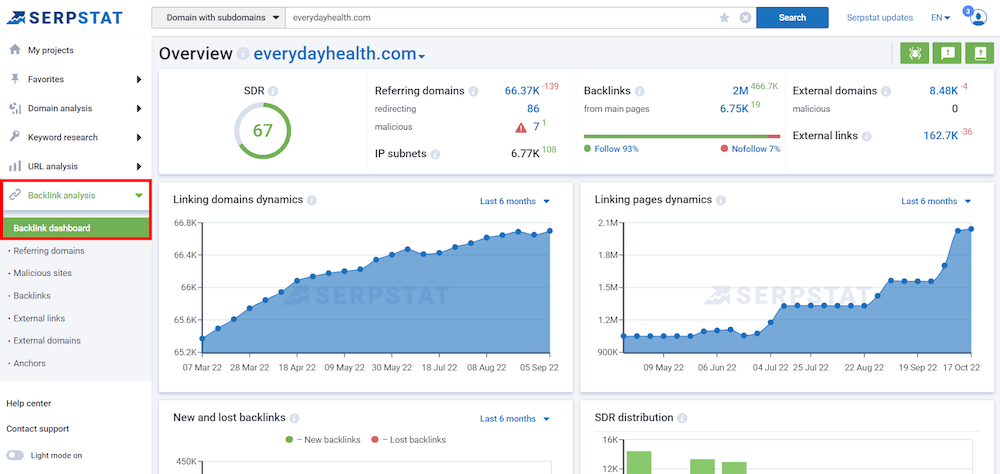
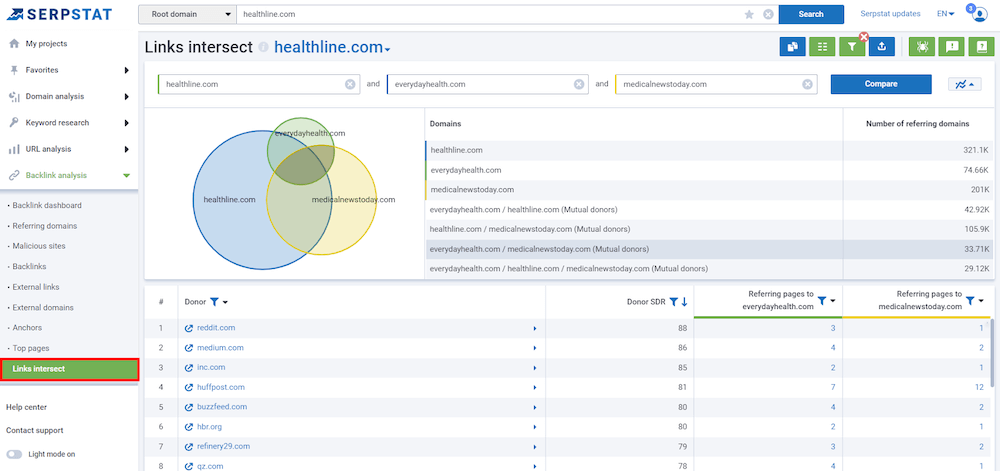
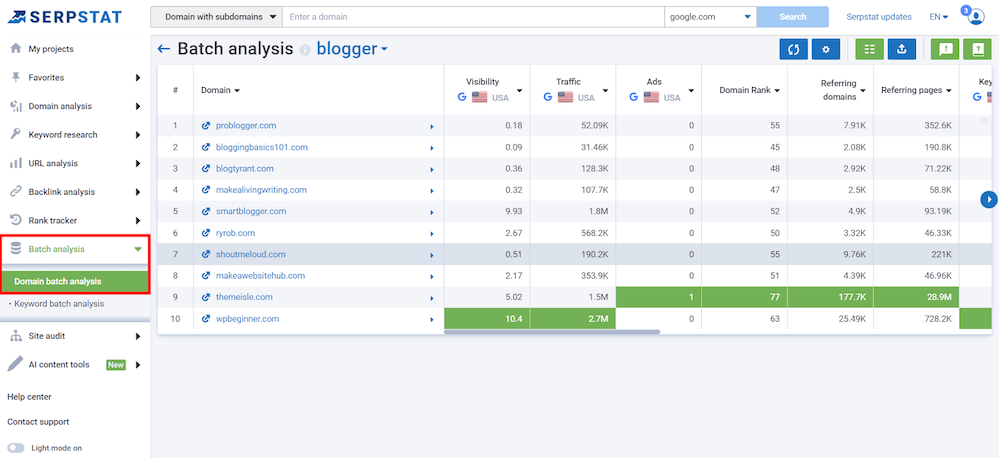
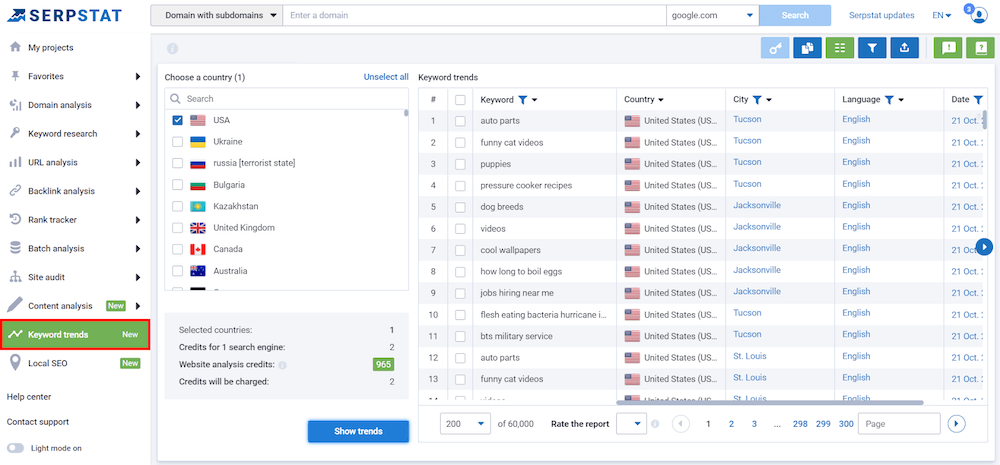
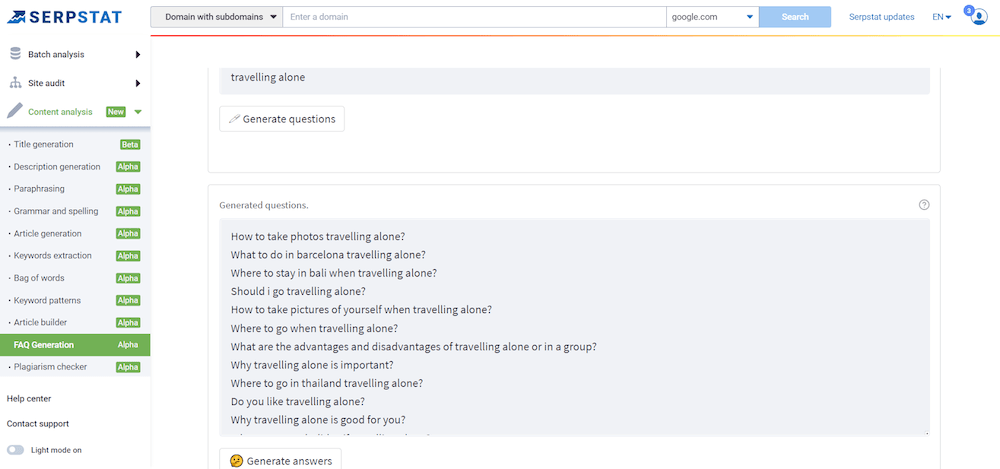
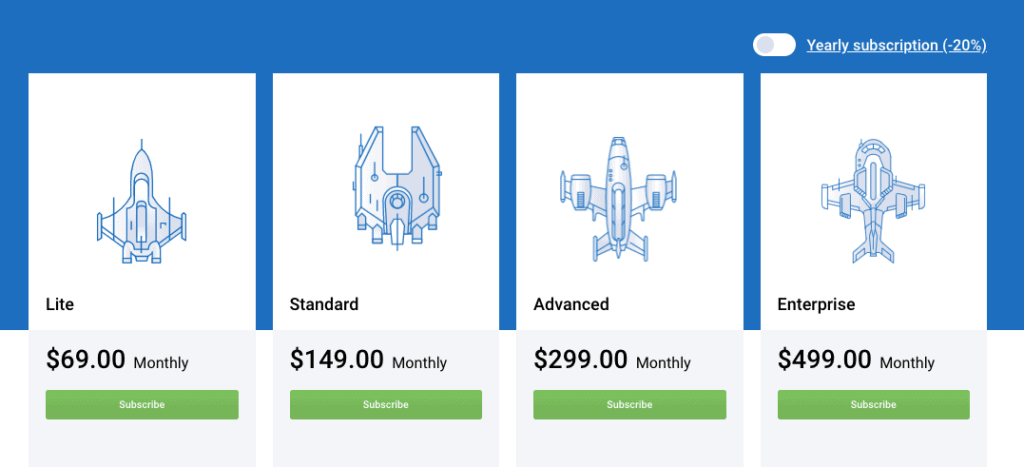

![]()
![]()
![]()
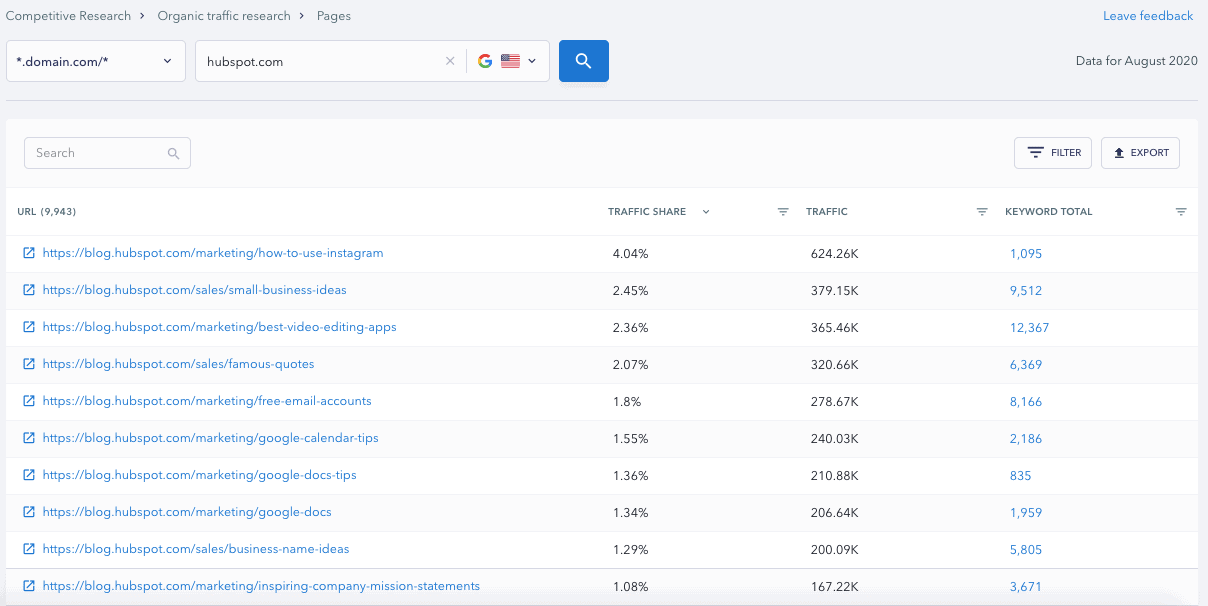
![]()
![]()
![]()
![]()
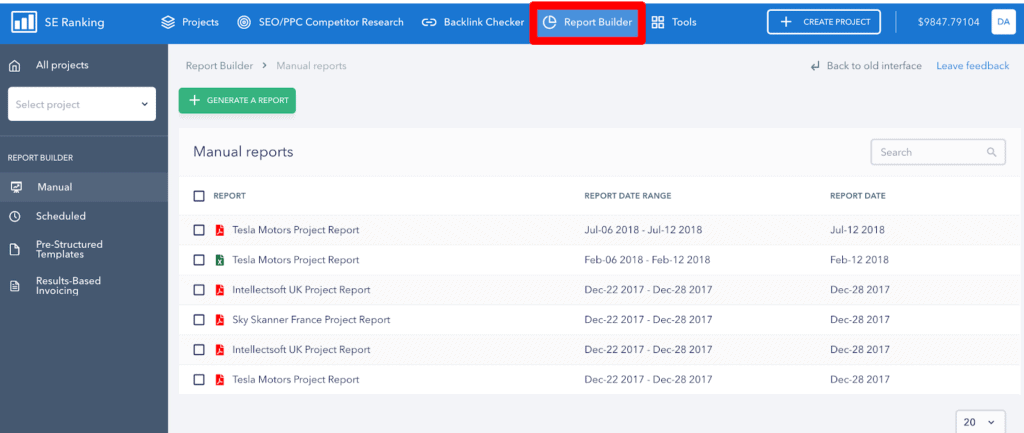
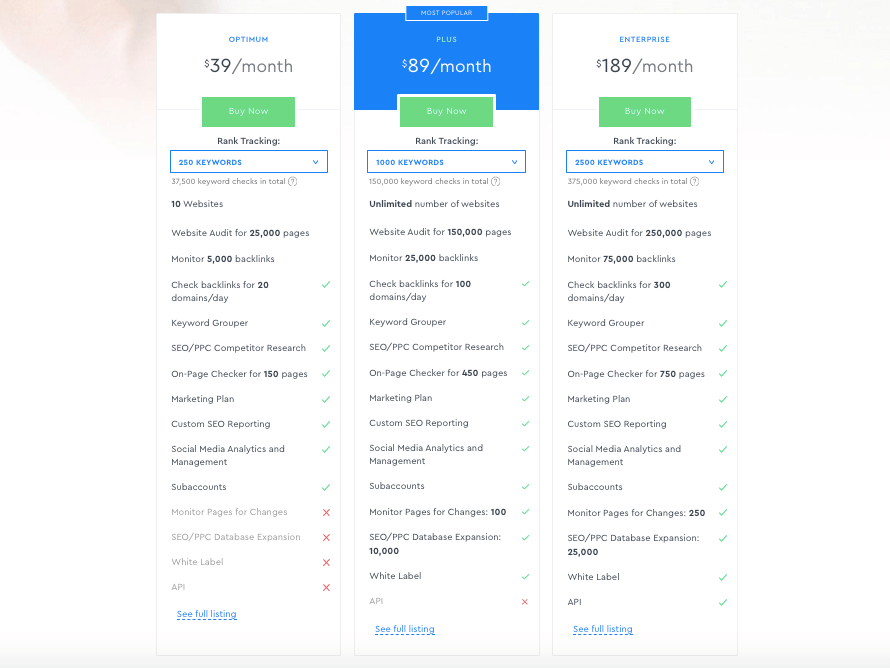
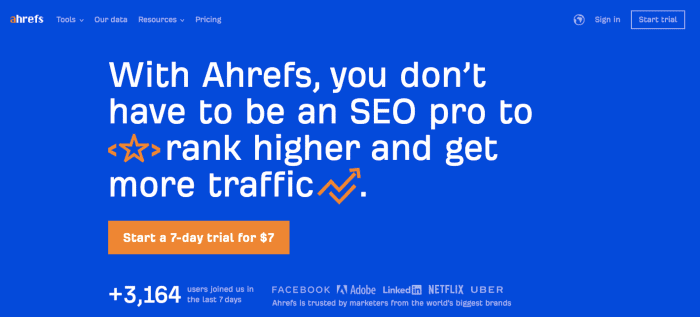


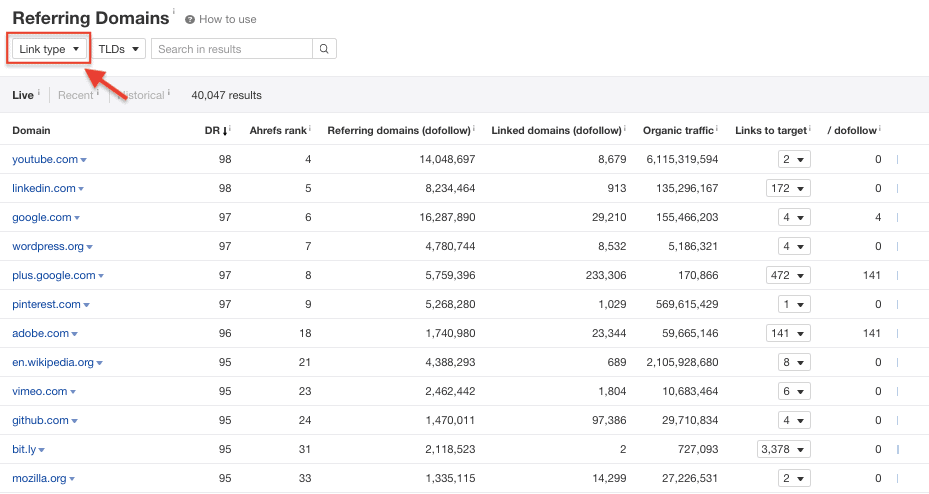

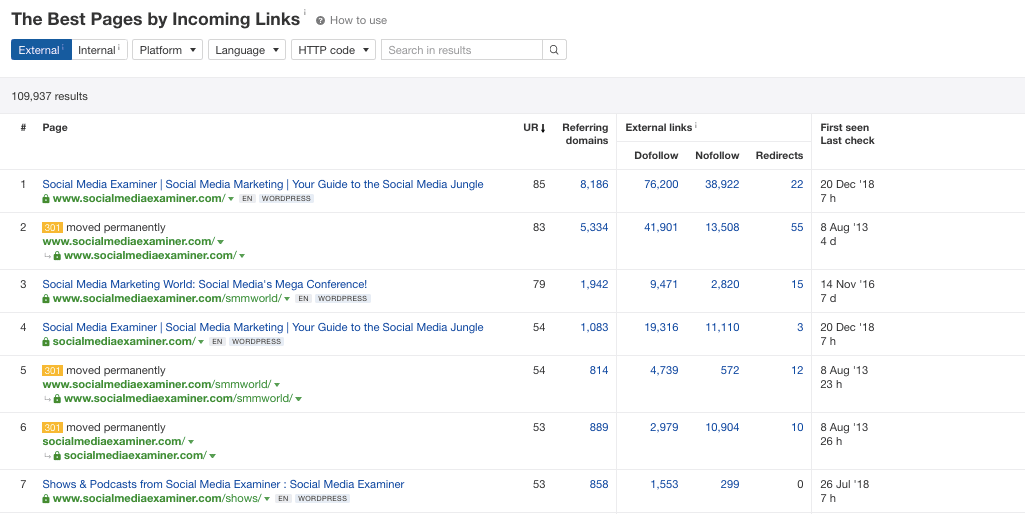
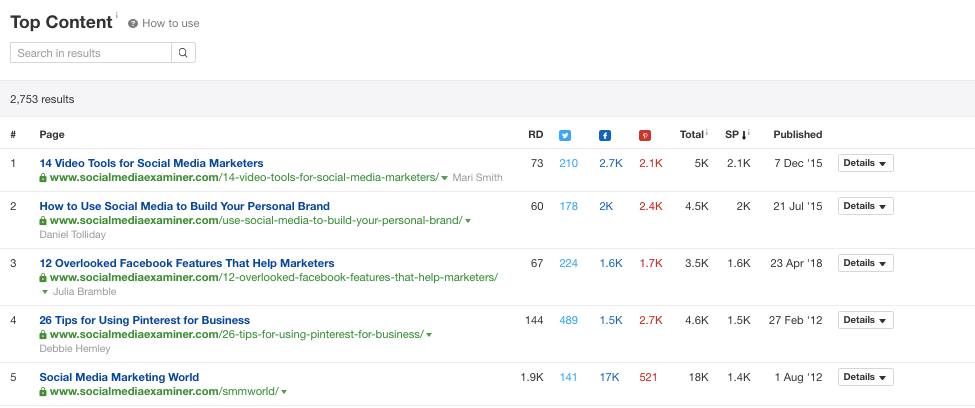

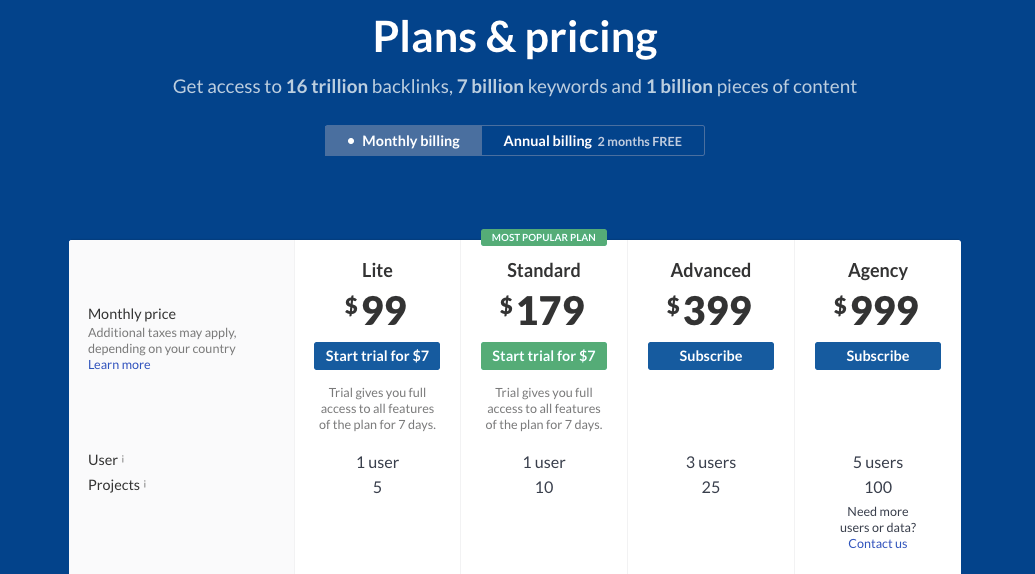
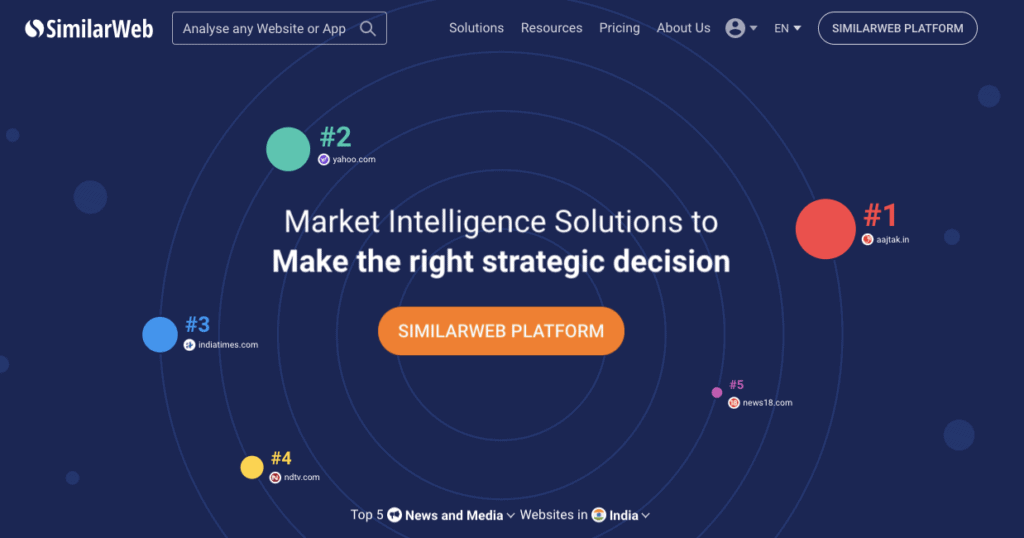
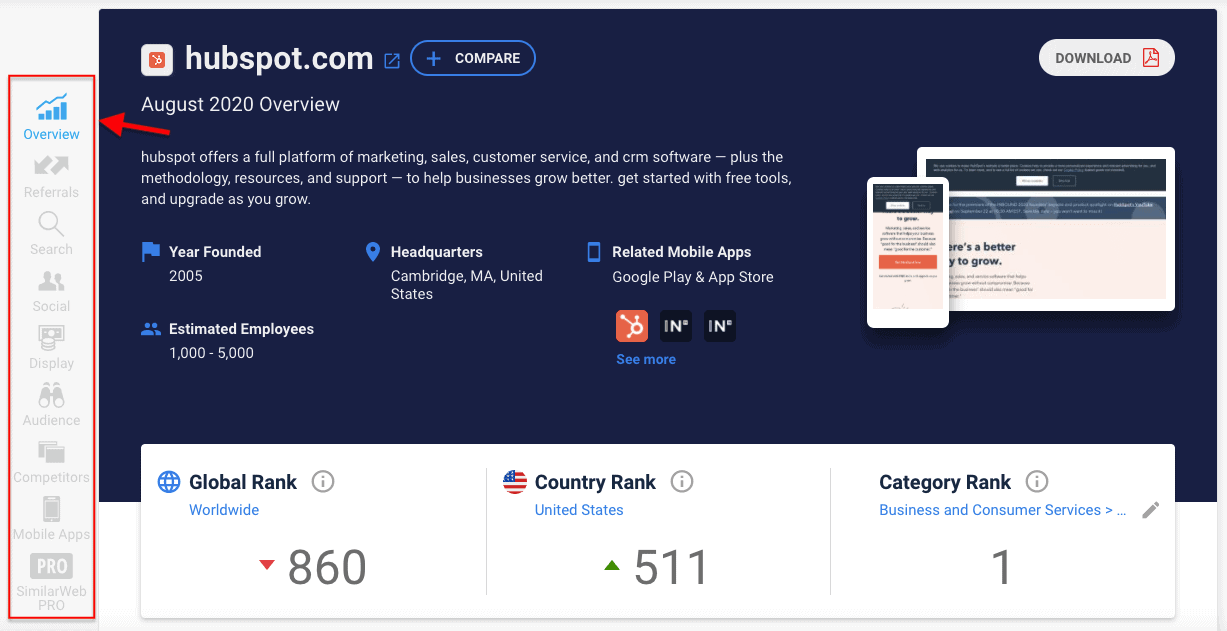
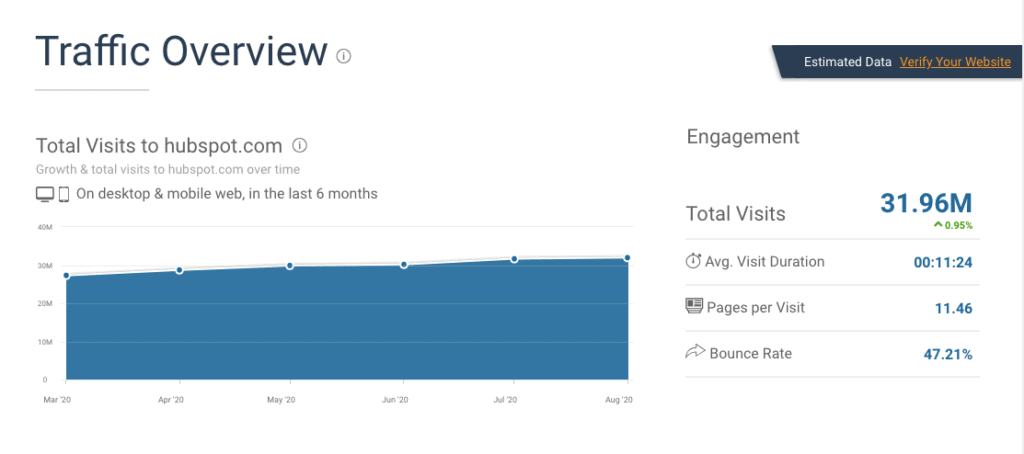
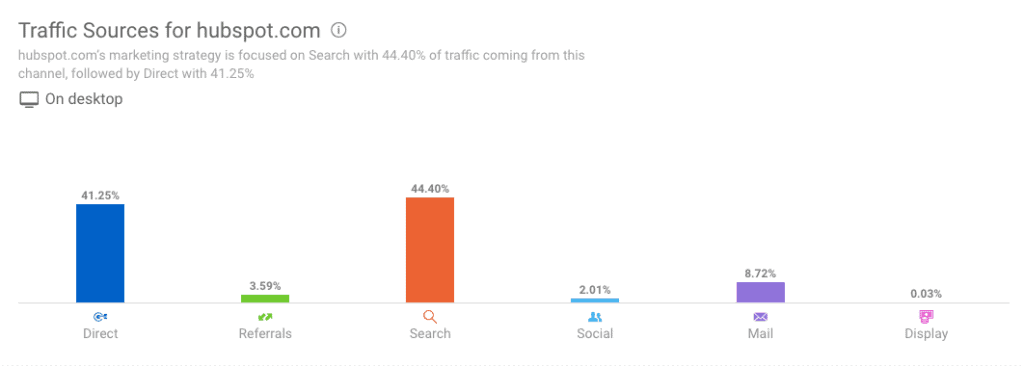

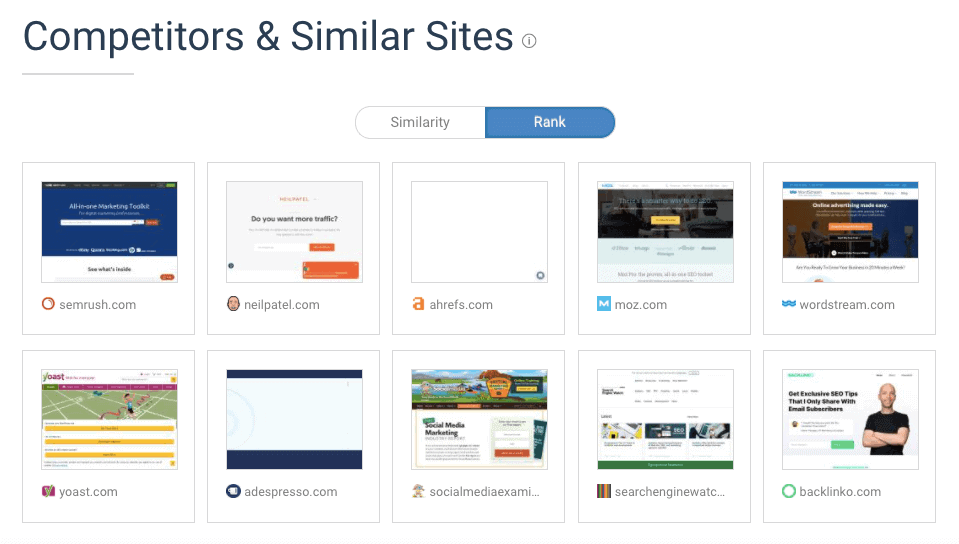
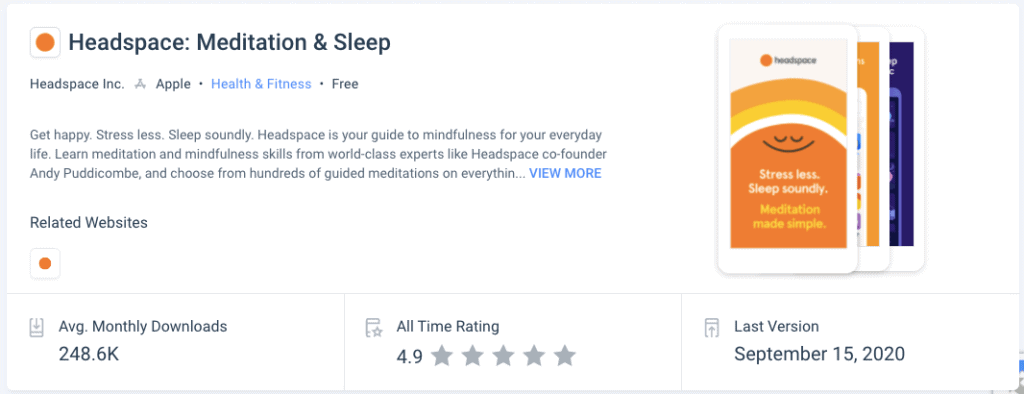
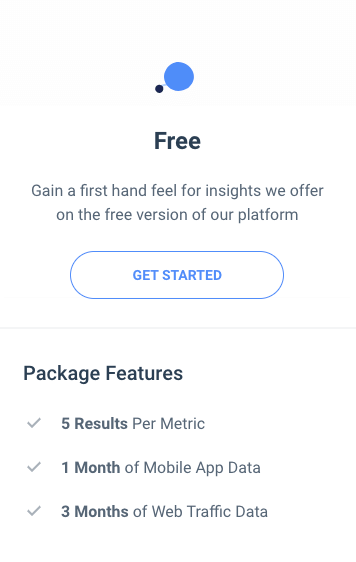
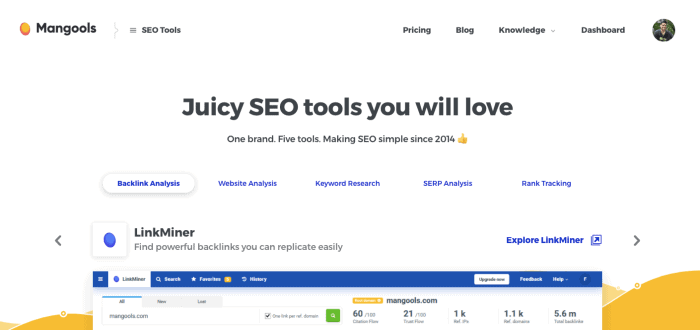

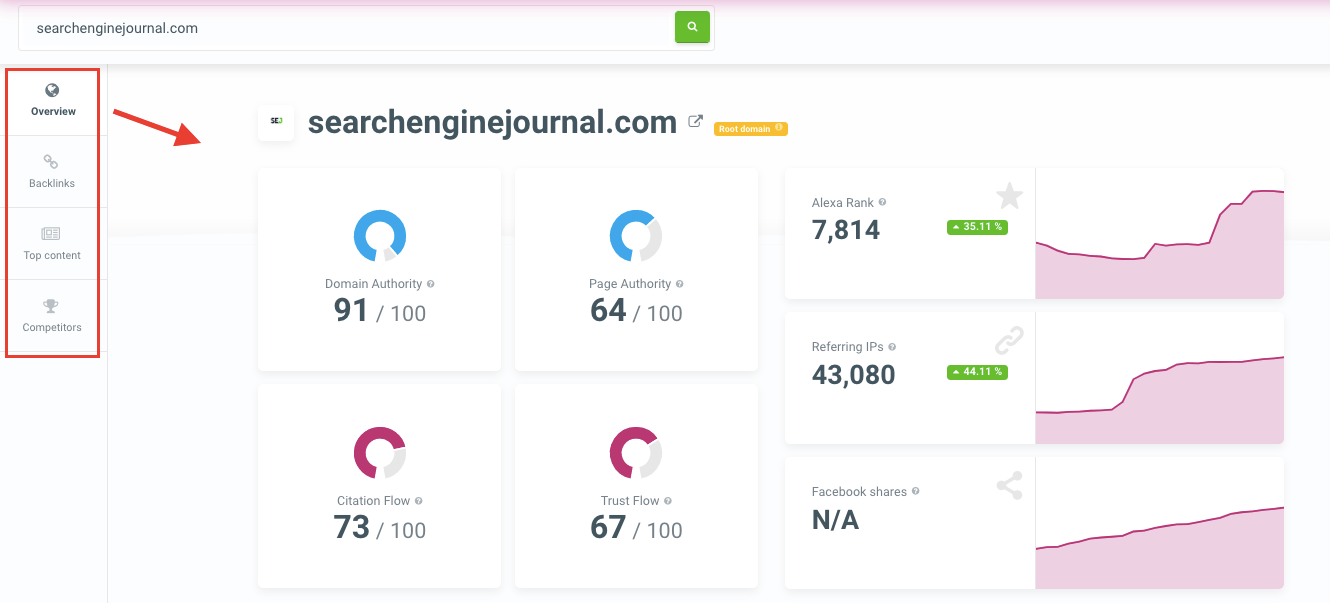
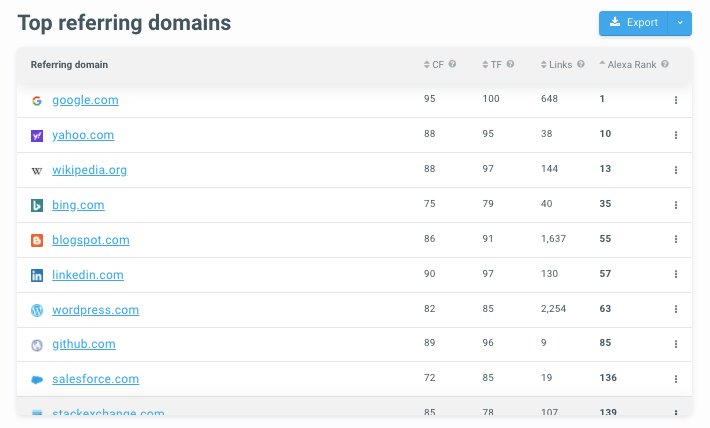

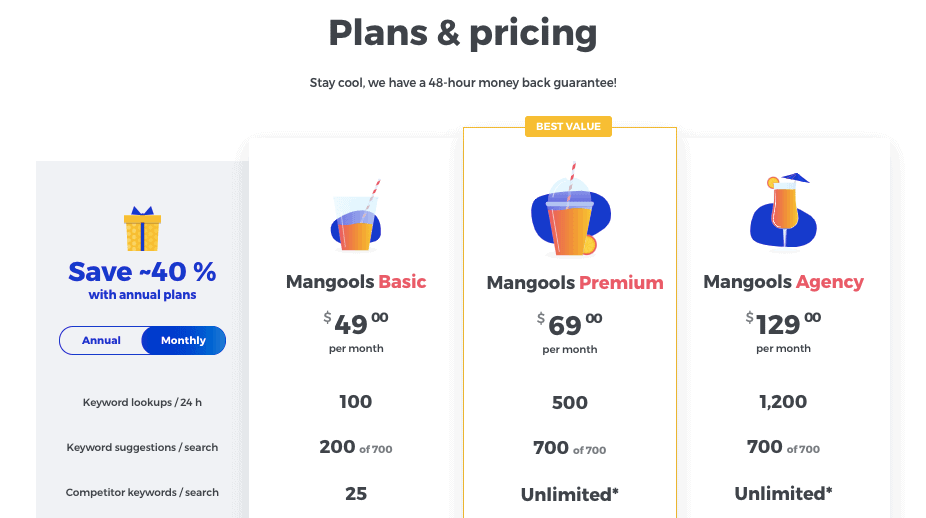
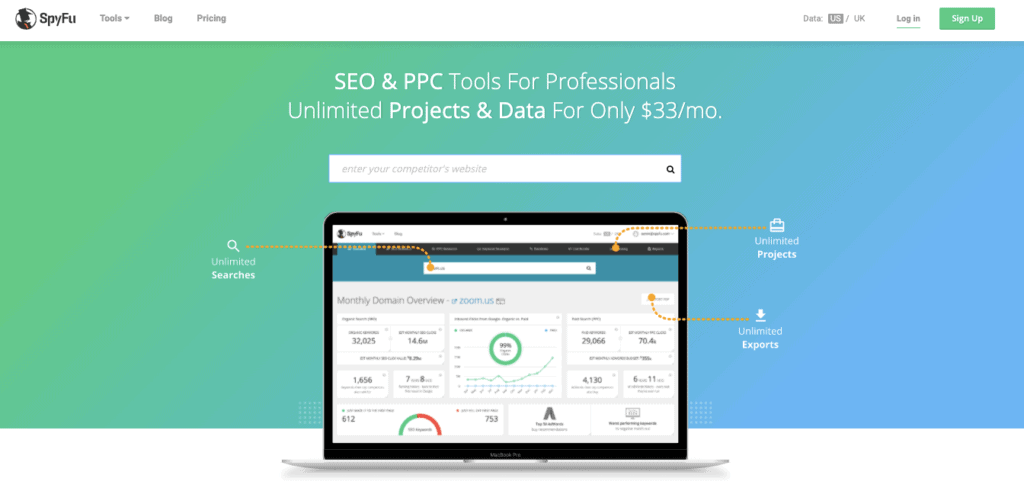
![]()
![]()
![]()
![]()

